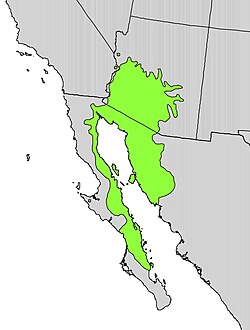This article includes a list of general references, but it lacks sufficient corresponding inline citations .(March 2013) |
| Parkinsonia microphylla | |
|---|---|
 | |
| Scientific classification | |
| Kingdom: | Plantae |
| Clade: | Tracheophytes |
| Clade: | Angiosperms |
| Clade: | Eudicots |
| Clade: | Rosids |
| Order: | Fabales |
| Family: | Fabaceae |
| Subfamily: | Caesalpinioideae |
| Genus: | Parkinsonia |
| Species: | P. microphylla |
| Binomial name | |
| Parkinsonia microphylla | |
 | |
| Natural range | |
| Synonyms | |
Cercidium microphyllum(Torr.) Rose & I.M. Johnst. | |
Parkinsonia microphylla, the yellow paloverde, foothill paloverde or little-leaved palo verde; syn. Cercidium microphyllum), is a species of palo verde.
Contents
- Description
- Ecology
- Uses
- Cultivation
- Foothill Palo Verde pictured near the Superstition Mountains (Arizona)
- References
- External links
It is native to the Southwestern United States in southeastern California and southern Arizona; and to northwest Mexico in the states of Sinaloa, Sonora, and Baja California. The plant is mostly found on slopes, and is one of the most common trees of the Sonoran Desert.


